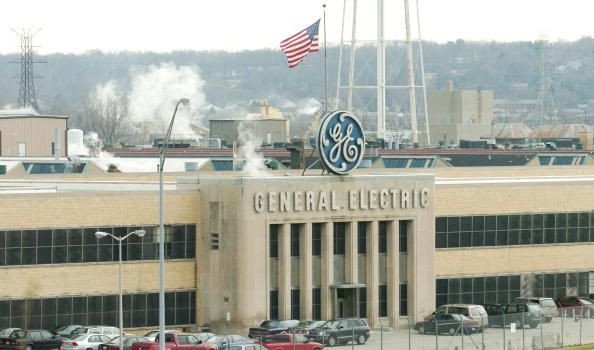GE Aviation's Growth Is Just Beginning

Despite a recent rally, General Electric (NYSE:GE) stock has shed more than two-thirds of its value since the beginning of 2017. Furthermore, several vocal analysts believe the stock is still overvalued and could fall to $6 or even lower.
Bearish analysts have a number of valid concerns about GE, particularly related to its weak balance sheet and the plunging profitability of its power segment. That said, these analysts seem to be drastically undervaluing the company's most profitable business: GE Aviation. GE Aviation already accounts for the majority of the conglomerate's earnings, and it is poised to continue growing rapidly over the next decade.
Another excellent year in the books
Most of General Electric's businesses struggled in 2018, but GE Aviation had an incredible year. For the full year, aviation segment revenue rose 13% to $30.6 billion. Segment profit grew at an even faster rate, surging 20% to $6.5 billion.
While the aviation division only accounted for about a quarter of General Electric's revenue in 2018, it provided 60% of the company's industrial segment profit. The aviation business will only grow in importance over the next year or two, as GE plans to shed its oil and gas, transportation, and healthcare segments -- and most likely its lighting business -- through asset sales, spinoffs, and share sales. Collectively, these segments that are likely to be sold or spun off generated $4.8 billion of profit on $48.3 billion of revenue last year.
GE Aviation's strong 2018 performance outpaced management's expectations for 7% to 10% growth in revenue and operating profit. Some of that outperformance relates to new accounting rules implemented last year. However, the aviation business also experienced buoyant demand, as reflected in its 2018 order intake of $35.5 billion, which boosted its backlog 12% to $223.5 billion.
A decade of growth ahead
For 2019, management expects slower growth at GE Aviation due to the difficult year-over-year comparison it faces. Revenue is on track to rise at a high-single-digit rate, accompanied by low-single-digit profit growth.
This growth slowdown won't last long. For one thing, demand for single-aisle planes is red-hot. Airbus (NASDAQOTH:EADSY) has a backlog of nearly 6,000 orders for its A320neo family jets. Boeing (NYSE:BA) isn't far behind, with almost 4,700 orders for its 737 MAX. GE's CFM joint venture produces the LEAP family engines that power every Boeing 737 MAX and about 58% of the Airbus A320neo family aircraft on order.
Airbus and Boeing are raising production of their single-aisle models this year to meet demand. Moreover, both aircraft manufacturers want to increase output even further. The main factor holding them back has been supply constraints at CFM, which are slowly being resolved.
Furthermore, GE Aviation gets significantly more revenue -- and the vast majority of its profit -- from aftermarket services rather than jet engine sales. Thanks to years of rising production, the installed base of CFM engines is set to increase at a 4.5% compound annual growth rate over the next decade. Total aftermarket revenue will rise at an even faster rate, due to CFM expanding its scope of services and the aging of the installed base of engines.
The LEAP production ramp should help drive further margin expansion for GE Aviation after 2020, with unit costs declining steadily as CFM learns how to build engines more efficiently.
In GE Aviation's wholly owned business, production of GE engines for Boeing widebodies plateaued a few years ago. However, high-margin service revenue is likely to keep growing for years, as the company is just starting to benefit from a surge in output that began around 2011.
Finally, GE sees ample growth potential in its military aviation business. Military spending tends to be cyclical, but the company expects conditions to be favorable in the coming years, causing revenue to roughly double by 2025.
GE Aviation's profit growth will offset divestitures over time
General Electric expects to remove roughly $50 billion of debt and pension liabilities from its books over the next two to three years thanks to its aggressive divestiture plans. It will hold an IPO for up to 49.9% of its healthcare division and spin off the rest to shareholders, it will sell its remaining shares of Baker Hughes, a GE Company, and it will merge its transportation business with Wabtec. These efforts will help GE dramatically strengthen its balance sheet.
Bears worry that getting rid of these businesses -- particularly GE healthcare -- will devastate GE's profitability. (They posted combined segment profits of $4.8 billion last year.) Yet the aviation business has a good chance of doubling its segment profit to around $13 billion over the next decade as revenue surges toward the $50 billion mark. That would more than replace the lost earnings from the segments being divested.
A return to modest profitability at GE Power and GE Capital, lower interest expense, and deep cost cuts at GE's corporate headquarters will also boost profits. The net result will be much higher earnings for General Electric, even with half as many business units. And GE Aviation is the segment that will drive the bulk of this profit growth.
This article originally appeared in the Motley Fool.
Adam Levine-Weinberg owns shares of General Electric. The Motley Fool owns shares of and recommends Westinghouse Air Brake Technologies. The Motley Fool has a disclosure policy.



















